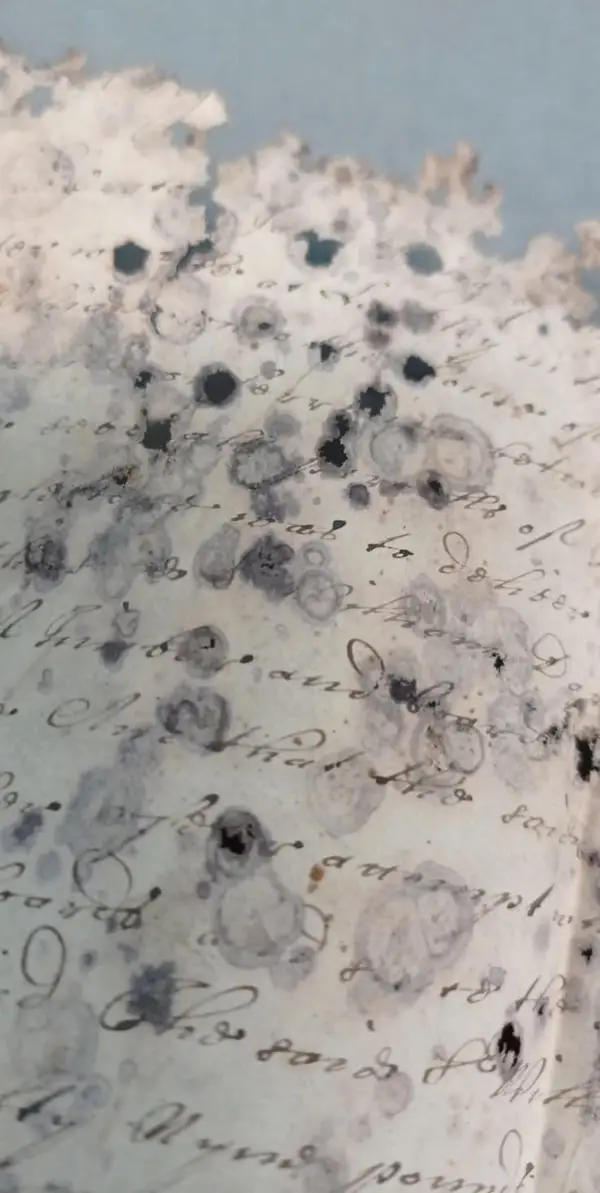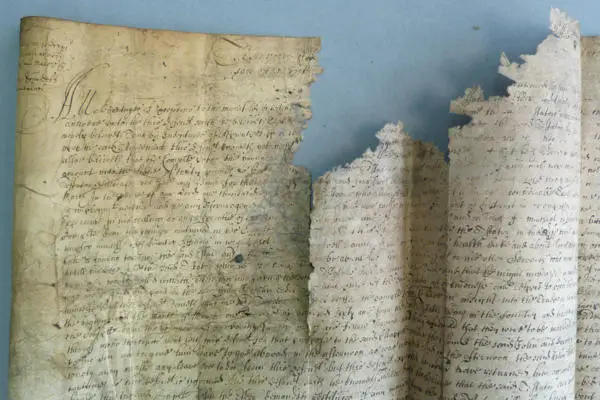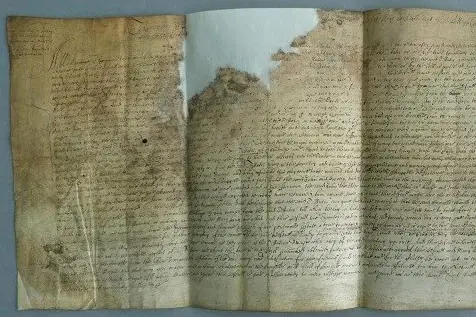Conservation in action: Conserving mouldy documents
The richness and extraordinary variety of London Metropolitan Archives collections can also be found in the great variety of formats and material of which the documents are made. One of the most common materials found in our collections is parchment, a very durable material which, however, can deteriorate significantly if exposed to fluctuating environmental conditions. In such environments mould can grow on documents and results in damage to the parchment like discolouration, fragility and losses.
Conservator Giorgia Genco describes the treatment carried out on a series of mould damage parchment documents from the City of London collections.

Description and condition of the documents
Parchment is used as a writing support in documents and books, and in bindings for covers and sewing supports. Parchment is made of animal skin, generally from cow or sheep, which is lime cured to remove the hair and layers of fat, then left to dry under tension. Parchment is a very durable material; its main component is collagen, a protein which deteriorates inevitably over time and is prone to heavy distortions if exposed to the fluctuations of relative humidity and temperature.
In the conservation studio, our conservators often deal with damaged parchment that is frequently also affected by mould. Mould usually grows if the relative humidity is higher than 65-70%, and is responsible for mechanical, biological and chemical damage to the archival records. As a result, the original support becomes so fragile that further handling would cause greater loss of the document. In some cases, mould could be a health hazard to users since it is a potential source of allergies and respiratory diseases.

Our conservator Giorgia Genco describes the treatment carried out to conserve and make available to users a bundle of parchment documents from the City of London collections. The series is part of the Mayor’s Court records and contains Bills of Complaint and Answers, 1668-1669 (CLA/024/07/038/002). The parchment documents are different sizes and are folded several times according to their dimensions. Some of them are held together with a strip of parchment passing through two holes pierced near one of the corners. They are all handwritten with iron gall ink.
The documents came to the conservation studio in bad condition. Almost every single document showed signs of mould damage, with different degrees of severity. The mould was inactive but had caused extensive damage. Some documents were slightly affected along the edges which had become soft, while others were badly damaged with large areas of loss and extreme fragility of the support. Mould damage on parchment can have a very distinctive pattern and it is recognisable by its spotty shape, usually coloured in pink, dark blue and purple shades. The documents were also stiff along the folds and therefore difficult to open and to handle safely without adding further tension. This condition provided a challenge to repair them in the most appropriate way.
The first step of the conservation treatment was to remove the surface dirt and any residue of mould by means of a soft brush. The cleaning was carried out on a surface connected to an air extractor to catch the particulates and the mould spores. It is very important to always wear a mask and gloves while dealing with potential health hazards.
In order to carry out the repairs the documents needed to be flattened. The items were placed in a humidification chamber to gently introduce moisture into the parchment fibres. The chamber is connected to an ultrasonic humidifier producing cold mist; the mist is so fine and controlled that it allows a gradual and slow humidification of the item limiting any stress or distortions of the writing support. Once relaxed, the skin needed to be dried under tension to return to its natural stiffness and shape. This was done using magnets carefully placed around the edges and the tears of the documents. The parchment was then left to dry completely.

The fragile areas of the documents affected by mould were consolidated using thin Japanese tissue and dry wheat starch paste. Tears and losses were repaired and filled with Japanese paper and paste. The repairs were left to dry evenly underweight to avoid possible distortions.
Once repaired, the items were refolded along their original creases. Ideally, we would have preferred to store these documents open, but it would have required too much storage space and we always need to be mindful on how we use storage space in the archive.
Finally, the documents were housed in a clamshell box made of conservation grade board.